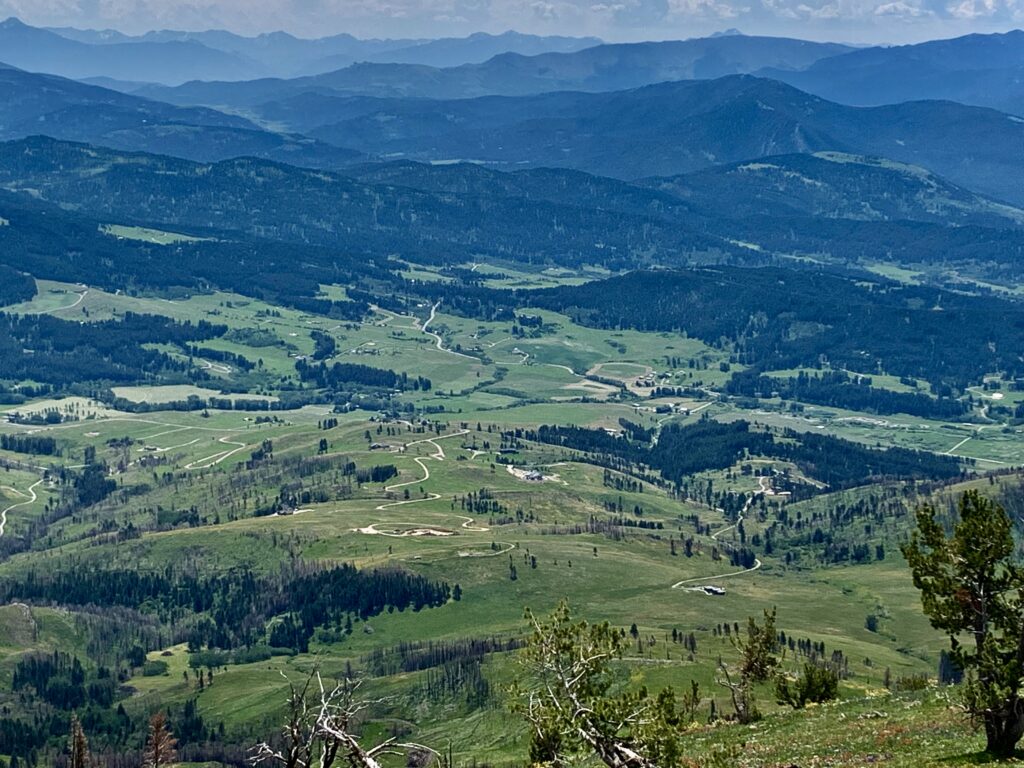by Todd Wilkinson
For we humans, everything we do in wild nature is a matter of individual perspective—and a reflection of our intelligence level. Often, it seems, both fear and arrogance—the twin death knell of wild places— rise in direct inverse proportion to personal IQ.
Consider the wildlife species we put into the “dangerous” category, the level of incompatibility we assign to them, and subsequently our ability and willingness to co-exist, or not.
This year, Yellowstone National Park could notch five million tourist visits and neighboring Grand Teton could reach 3.5 million. The vast majority of travelers are coming from distant urban areas that are, it’s safe to say, less wild—as in having a less diverse array of free-roaming charismatic megafauna (i.e. big native terrestrial wildlife species). Vacationers journey here to experience a quality of wildness that has been lost back home.
Today in Greater Yellowstone we are dealing with a ferocious unprecedented inundation of bipedal primates who clearly are out of their element. Many visitors and/or transplants are arriving to live out their lifestyle fantasies, carrying warped phobias uploaded into their psyches by social media, fueled by fairy tales, sensationalistic podcasts, ridiculous programming produced by The Discovery Channel, inflamed by canards on talk radio, and told with harrowing flourish in hook and bullet publications. If you haven’t noticed, concocting tales about menacing canid-fanged animals abound. And they’re routinely deployed to justify assertions that those animals must be lethally “controlled and managed,” or made to fear us, in order to keep the great outdoors safe for our further colonization.

The truth is that 95 percent of the Lower 48—including wilderness areas in other states—has been wiped clean of the kind of wildlife diversity we have in Greater Yellowstone and many state lawmakers in our region don’t seem to understand why.
In Wyoming, Montana and Idaho, politicians routinely reference “zones of social tolerance” where certain animals, they say, should not be allowed to roam, even when said animals are not causing conflict and, often, locals don’t even know they are there. Those public officials subjectively create “no-go” areas for grizzlies and wolves because rural people, they say, fear for their personal safety, even though negative encounters with the maligned species are, statistically speaking, incredibly rare.
No sane person I know who is involved with wildlife conservation honestly believes that grizzlies and wolves ought to inhabit cities and suburbs. Yet wild country, instead of expanding, is actually permanently in retreat, every day as realtors, developers and newcomers expand the so-called “wildland-urban interface,” behaving in ways that cause conflict with the native animals that were living there fine before the people arrived.
Uneducated about nature, stirred up with fear, anxiety and short-term profit motives, they are ill-equipped and unwilling to co-exist with animals they claim represent an imminent threat to their safety or bottom lines. Many, if they were given a basic test of knowledge about what wildlife need to survive, would fail it.
° ° ° °
So let us return now to the topic of Yellowstone National Park.
One might think that a person who has spent half a century dwelling among the most concentrated assemblage of wild carnivores (meat eaters) in the Lower 48—grizzly and black bears, wolves, mountain lions and coyotes plus bison, bull elk and moose—would awaken every morning petrified at the prospect of even going outdoors.
For 51 years, Steven Fuller has eagerly arisen to greet the twilight of dawn literally in the geographic heart of Yellowstone. From his doorstep he can hear the thunder of the Upper Falls tumbling into the Yellowstone River. It is accompanied by white noise and rising mist emanating from the nearby Lower Falls crashing into the Grand Canyon of the Yellowstone. It’s not just scenically and sonically spectacular; the landscape is alive with the species that make it wild. Think of how so many places in the West are pretty but vacant.
Fuller has a gun but he doesn’t pack heat when he ventures outside. He doesn’t ask the park superintendent to have rangers come in and “thin out” the bears and wolves because he thinks they are menacing or too many. He’s never requested that grizzlies foraging nearby and sometimes necessitating that he wait before approaching his house be subjected to “aversive conditioning” involving rubber bullets. He and the wildlife maintain a respectful zone of tolerance and his exists subordinate to theirs.
Fuller has watched numbers of predators and prey rise and fall in parallel with one another. He’s grown old along with bull and cow bison that have frequented the meadow outside his living room window and he’s seen members of the local herd encircle buffalo that have died, licking the departed as a way that, he says, appears at least on the surface to be part of a ritual of paying last respects.
Fuller has lived in Yellowstone longer than any other known person in modern history. Unfortunately, we don’t know the many names of individual indigenous residents who might have called these lands home for more years year-round. Now in his last, and come next summer, Fuller will step away from his posting as the Canyon winterkeeper and leave a sweep of protected nature that cannot be separated from his spirit and soul.
On many evenings, when his bedroom window is cracked open, he is not startled by the sounds of cracking twigs in the starlit darkness. Instead, he sails into dreamland listening to infusions of bugling wapiti, howling lobos and all manner of grunts and other vocalizations which are not of the human kind.
With his cameras in hand, Fuller has witnessed tens of thousands of sunrises in Yellowstone’s Hayden Valley, encountering them in every season and every nuance of possible weather condition. The vast majority of his wanderings have happened solo. He’s walked thousands of miles of park backcountry, reaching the far corners of it with family, friends and via horseback. His daughters grew up there; one is married to a talented biologist in Montana whose specialty is resolving conflicts between people and grizzlies.
Despite all of the so-called “scary animals” portrayed as aggressive and intolerable in the surrounding states, Fuller has never had to summon park search and rescue, never fired a shot at an allegedly aggressive beast, and never been severely (or fatally) injured by mauling, goring, hoof stomping or tumbling into a boiling geothermal cauldron. That’s because he stays alert, pays attention and he doesn’t do impetuously dumb things.
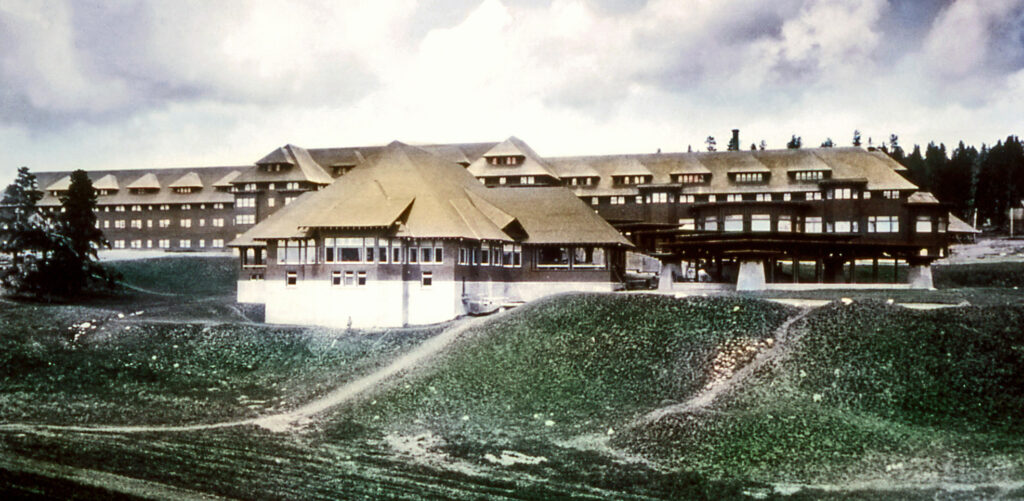
° ° ° °
On October 1, 1973, Fuller took residence of the old rustic government-owned home he still inhabits on a hill, located not far from where the famous Canyon Hotel stood, and is no more. The massive Canyon Hotel, which was 750 feet (more than two American football fields’) long and had 400 rooms, was designed by Robert Reamer, the same architect who gave us the Old Faithful Inn and expanded Lake Hotel. Historians say the Canyon Hotel’s central lounge was inspired by Frank Lloyd Wright’s Prairie Style motif. The hotel was badly damaged by the 7.5 magnitude earthquake centered at Hebgen Lake in 1959 and in 1960 it burned to the ground. The fact that no real physical remnant of Canyon Hotel still exists is a rare example of how a large expression of the human-built environment, which dominated its natural setting, can disappear.
Early in Fuller’s tenure as a winterkeeper, a grizzly, addicted to eating human trash when the operation of open pit dumps were still norm in the park, tried to enter the family’s kitchen. The bear was killed by a ranger. On another occasion, Fuller lost a beloved house cat who ventured outdoors and was nabbed by a coyote. That incident left him deeply saddened, but he says it comes with living in a wild neighborhood.
On the boardwalk leading to his front doorstep, Fuller often finds tracks and scat left behind on the frosty surface by passing griz and lobos, bison, elk and mountain lions. Once, during a visit to see him, he and I opened his back door and a grizzly unexpectedly walked by us only five feet away. Indeed, as the bear strolled past, and its ears twitched slightly, there was a moment of mutual recognition but no hostility.
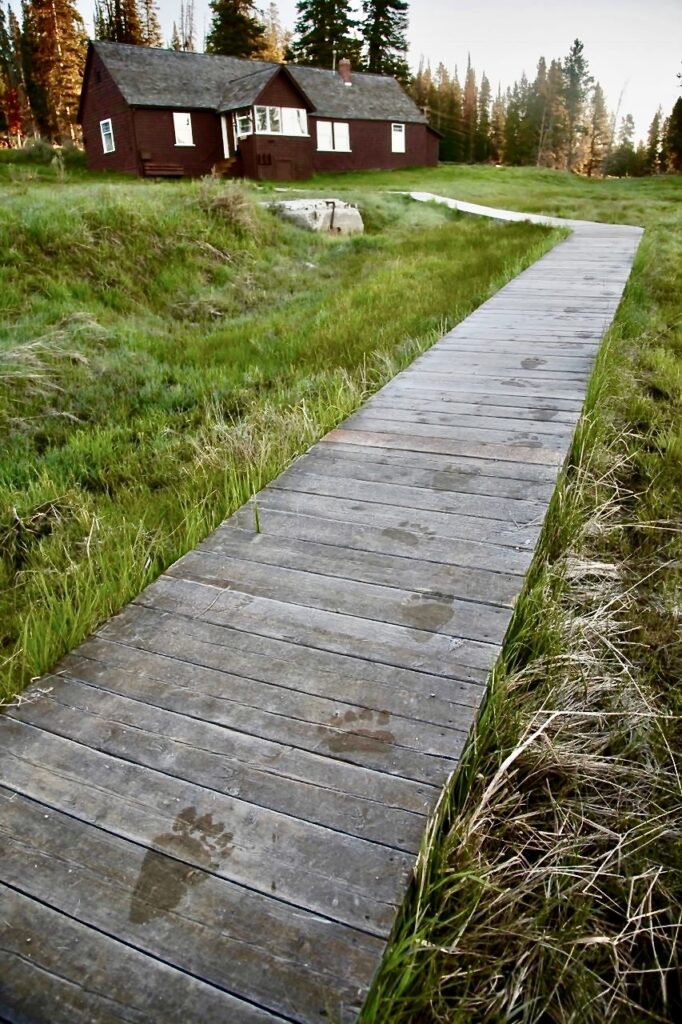
I met Fuller in 1982, which was the first of two consecutive summers I worked at Canyon as a young college student for the park concessionaire. A few years later, in 1986, after being a violent crime reporter in Chicago, I took a newspaper job in Jackson Hole. That autumn long ago, right about now, I visited Steve and his wife, Angela, for a weekend rendezvous. It just so happened to coincide with park law enforcement sending out a search party to look for William Tesinsky who had gone missing.
Mr. Tesinsky’s car was parked along the road in the vicinity of Canyon a short ways away from the Fullers’ at Otter Creek. An amateur nature photographer and auto mechanic from Great Falls, Montana, Tesinsky, 38, was in Yellowstone to enjoy its seasonal delights. Back then, Octobers were much quieter and grizzlies rarer to see.
It turned out that Tesinsky had closely trailed a female grizzly, No. 59. He pressed his luck too far. The bear killed and fed on him, necessitating 59’s removal. Fuller had been summoned to join the search. The thought has never crossed his mind that Yellowstone is a landscape of fear.
Rather, he sees being in true wild country as a privilege, as a personal responsibility, as a place where his desires to explore do not supersede the needs of his four-legged or winged neighbors to have their space. To be in his element, he says, means respecting and empathizing with other animals in theirs.
As for him moving among the largest combined concentration of wild grizzlies, wolves and bison in the Lower 48, the most dangerous and unpredictable animal he has encountered, he says, have far and away been human. This includes macho visitors (typically men) who swagger around with sidearms holstered on their hips, viewing wildlife with suspicious intention.
If you are a tourist in a Yellowstone developed area, the chances of being injured by a grizzly are one in 69.7 million visits, according to park officials. If you are camped in the frontcountry, the chances are one in 29.2 million overnight stays. If you pitch your tent in the backcountry, it’s one in 1.9 million overnight stays and if you’re hiking miles away from the trailhead, the chances of being injured by a griz are one in 275,000 travel days. Backpackers who hike in groups, make their presence known, keep a clean camp and hang their food up at night improve their odds of avoiding an unwanted encounter even more.
More people have been injured by approaching bison than bears and no one has been injured by a wolf—this in a park and a larger ecosystem where tens of millions of tourist visits have happened amidst many different packs.
As Fuller says, the Greater Yellowstone Ecosystem might appear expansive, but it is actually small and finite, a fragile remnant that he thinks is being taken for granted. “We as a species have access to more space and options for living and recreating than we will ever need, but animals in the wildlands of Greater Yellowstone do not, and in many places beyond the boundaries of Yellowstone their options in the mountain valleys are shrinking,” he says. “The changes that are happening to the once rural landscapes are dramatic, in ways I never could have imagined when I arrived in the park as a young person in the 1970s.”
For all those people who approach wild nature as something that must be conquered and subdued in order to make it harmless or “useful,” Fuller has a different attitude.
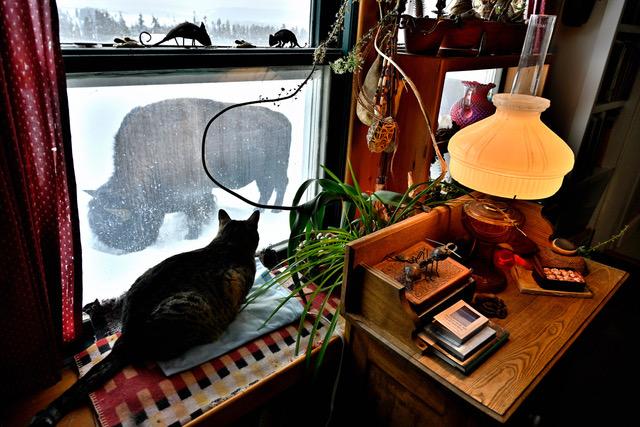
Often, we regard nature and its wild manifestations as enemies that we must heroically vanquish, he says. When people head into the mountains or build trophy retreats in places important to wildlife and then encounter animals that do not immediately flee, they label the animals unwanted “trespassers” and being “aggressive.”
Yes, the attitudes above are pervasive—and they are precisely the reasons why the West nearly lost most of its wildlife. How is this era of Manifest Destiny 2.0 any less destructive from the original version?
What guides him is reverence, as in: being grateful every day that wildness still exists; trying to be smarter in actually understanding the terrain he is entering; keeping one’s footprint of impact minimized; treating non-human animals with deference; and always carrying bear spray as a last resort, though he has never had to deploy his. Wildlife, he says, are sentient beings.
Today, there is a lot of high-minded promotion of “co-existence.” If you apply any amount of mental energy, you realize co-existence is a (often meaningless) term and it is no different from other retorical coins of the realm, such as “sustainability,” “balance,” “stewardship,” “common ground,” and my favorite, “reciprocity.” Reciprocity literally means “the practice of exchanging things with others for mutual benefit, especially privileges granted by one entity to another.”
What mutual benefit are we imparting to wildlife when every human-centric decision requires that they surrender more, and how is exercising our privilege to exploit wild country bettering the prospects of survival for animals that make the country wild. Is that reciprocity?
Every day in the Rockies, our species is taking a little bit more—owed to our patterns of helter-skelter development and the zealotry of me-first recreational funhogs who relentlessly push for limitless access without reflecting about impacts. We like to invoke feel-good words but what do they mean in practice?
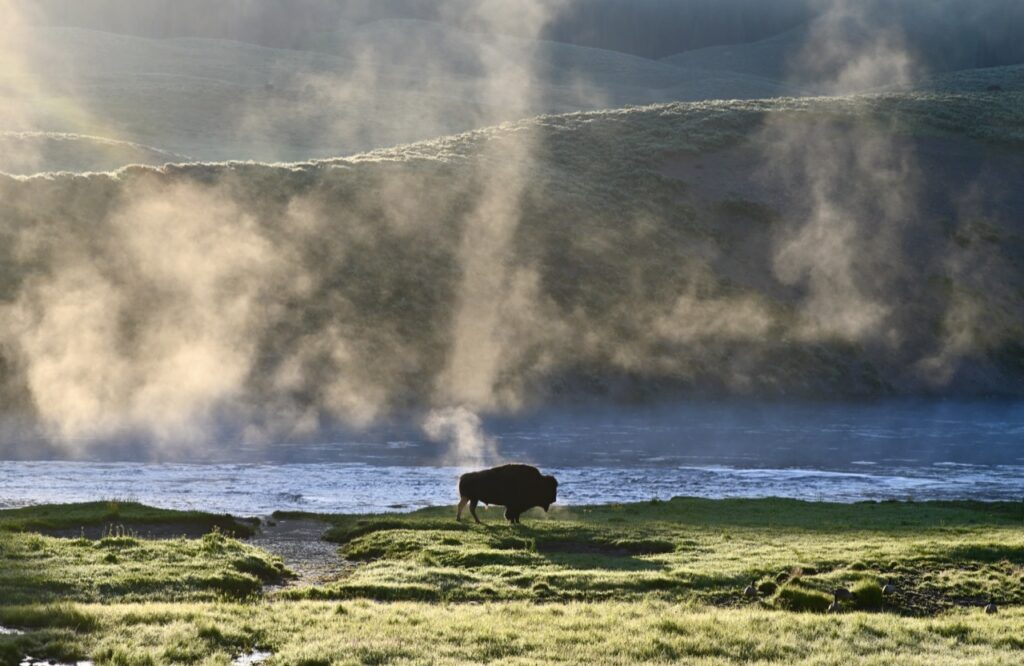
Here is the conversation about word salad that Fuller and I discuss often: If our activities result in wild inhabitants having to run away from us in fear, vacate habitat or perish, what kind of noble “co-existence” and “sustainability” is that? In our virtue-signaling lexicon, when we claim we are promoting “balance,” “stewardship,” “common ground,” “compassionate conservation,” and “reciprocity,” how do they hold real meaning in the absence of empathy for the non-humans they’re impacting?
Many of us have our own notions of what is sacred, inviolate and worthy of devotion. Yellowstone assumes that status for Fuller and, as he reminds, the wildness of Yellowstone is part of a larger flow, internal and external; harming one essential part is felt by the whole.
To me, Fuller personifies the non-consumptive attitude of true wildlife conservation. It is one of humility, modesty, respect and reverence for the non-humans living in his neighborhood. Across a span of five decades, his backyard in Yellowstone has become wilder with more so-called “dangerous animals” allowed to recover in number. He hasn’t recoiled; he’s embraced the untaming, immersed himself in it and done nothing to harm it.
Fuller has lived in Yellowstone longer than any other known person in modern history. Unfortunately, we don’t know the many names of individual indigenous residents who might have called these lands home for more years year-round. Now in his last, and come next summer, Fuller will step away from his posting as the Canyon winterkeeper and leave a sweep of protected nature that cannot be separated from his spirit and soul.
Yellowstone never had a better ambassador, not only for helping us better appreciate the magical nuances of wonderland, but as a low-impact representative of our species.
NOTE: Fuller is entering his final winter in Yellowstone and he is at work on a memoir. Keep checking back here at Yellowstonian. Soon he will be sharing regular dispatches with you as part of an ongoing column.
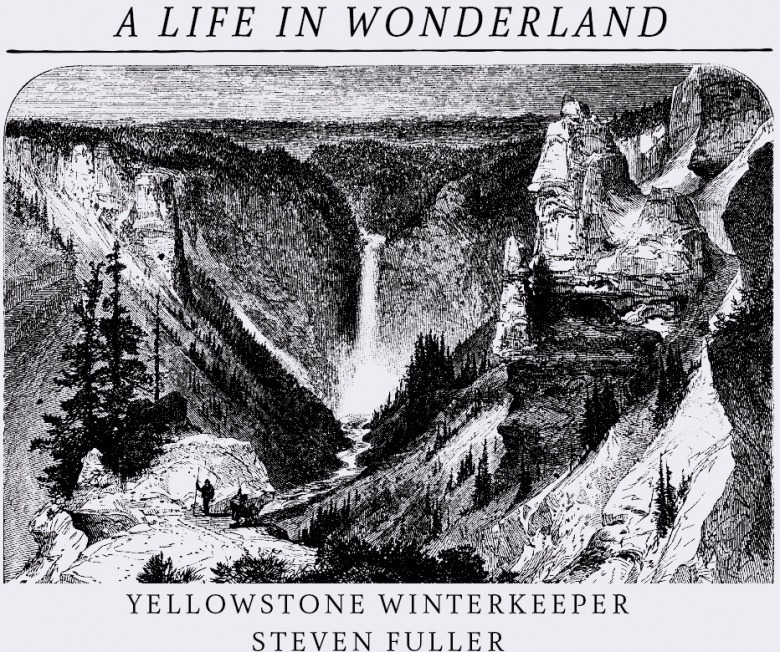
Read Steven Fuller’s debut column for 2024, below, as he enters his last winter in Yellowstone:







